

A member of the weasel family, pine martens are a cat-sized mammal and their bodies are covered in brown fur, except for a patch of cream-white coloured fur at the throat. They have black eyes, round ears, and long bodies.
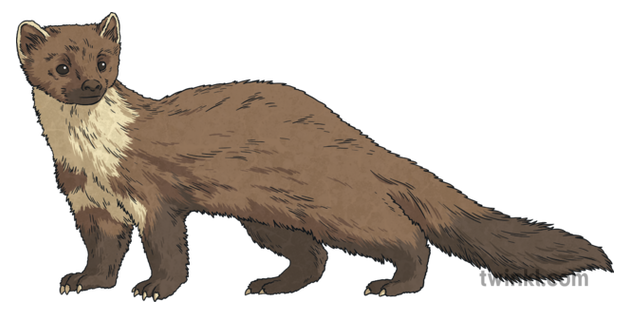
Pine martens are named after their habitat, preferring to live in woodland areas and spending the majority of their time in pine trees. They also live in scrub, rocky hillsides, conifer plantations, and crags. They're thought to be a 'habitat specialist', and prefer habitats with closed treetops (as you would find in forests) to provide protection from predators coming from above.
Preferring to rest and breed above ground, they make their dens inside the holes of trees, whether natural or made by another animal. For this reason, the pine marten's habitat is usually ancient woodland. They've also been known to adopt squirrel dreys or birds nests instead of making their own.
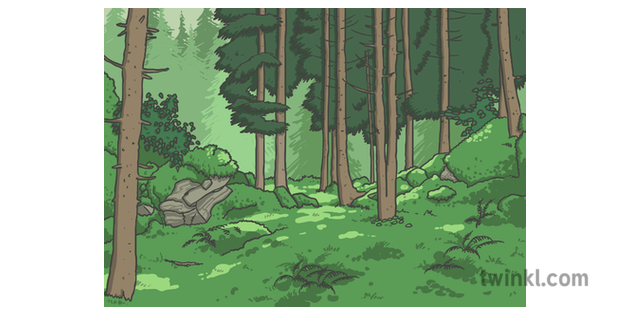
Sometimes named the European pine marten, they're found throughout Europe. In the UK, they're most commonly found in northern and central Scotland, especially in the Scottish Highlands. They have much lower numbers in northern England and Wales.
In Scotland, they're less specific about their preferred habitat, giving them the nickname of 'habitat generalists'. They live in a range of habitats here, such as in young forest plantations, coarse grassland or grass moorland. This is because there are fewer predators to be wary of in Scotland.
Other than the UK, they're found throughout western Europe to western Siberia, usually in coniferous forest. They also inhabit a number of Mediterranean islands, including the Balearic Islands, Corsica, Sardinia, Elba and Sicily.
The pine marten lives an arboreal lifestyle (up in trees), so it's adopted a variety of physical adaptations to help with this.
The pine marten's bone and muscle structure makes for powerful limbs. This means it can run, jump, and climb between trees with no trouble at all. It can easily clamber between branches and climb up the sides of trees to make its den in the hollow.
While the pine marten is up in the trees, it needs to be able to balance so that it doesn't fall. That's where its long and bushy tail comes in. It helps the animal to balance.
The pine marten uses its well-developed claws to grasp tree trunks and branches while its climbing and making dens. Pine martens are also the only mustelids (a family of carnivorous mammals) with semi-retractable claws.
Living in temporal regions (where there are four seasons), the pine marten has adapted to the changes in weather and temperature. In the winter, its fur coat is thick and silky to keep it warm, and then it's shed in the summer, where it's short and coarse to keep the animal cool.
Not only is the pine marten's body covered in fur, but its foot pads are too. This helps with warmth in the winter, but it also provides extra grip when the mammal is climbing trees.
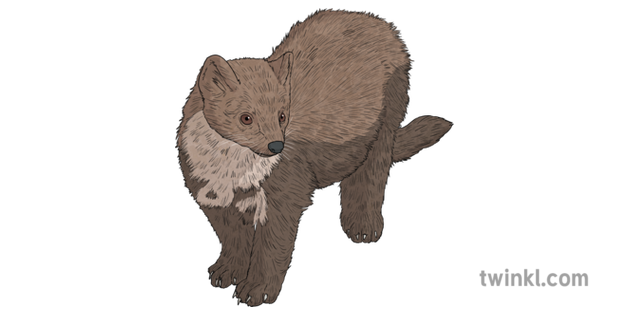
Pine martens are omnivores, but their main sources of food are birds, insects, and small mammals such as voles or rabbits. They also like to eat fungi, berries and eggs, giving them a wide and varied diet.
They might be adapted for life in the trees, but in fact, pine martens find most of their food on the ground. They hunt at night or around dusk.
Pine martens were found throughout most mainland Britain, the Isle of Wight and some Scottish islands until the 19th century. They were the second most common carnivore in Britain. However, the pine marten's habitat has since been affected by habitat loss, specifically habitat fragmentation. They have also been historically hunted for their fur. The species was close to extinction by the start of the 20th century.
While their populations have increased in Scotland throughout the highlands, they're still one of Britain's rarest native mammals. It's estimated that there's around 3,000 – 4,000 in Britain.
Now, pine martens and their dens are completely protected by the Wildlife and Countryside Act (1981). This means they must not be trapped, sold or disturbed.
Conservationists are also working hard to help pine marten populations grow. 51 pine martens have been moved from Scotland to forests in Wales to help grow the population there.
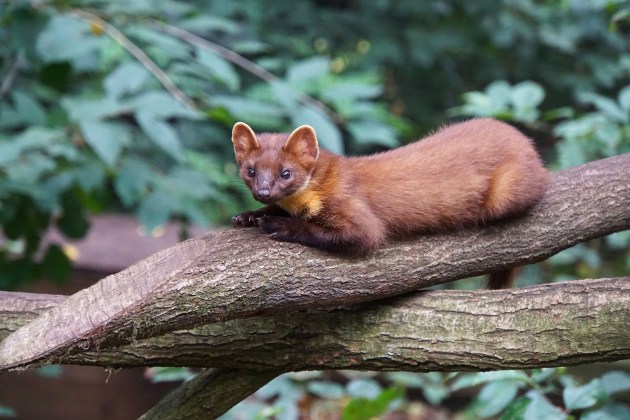
Although pine martens live in England, Scotland and Wales, it's difficult to find and see them in the wild. They're nocturnal animals, which means they're active at night, and they're solitary. A pine marten will only interact with another pine marten during the mating season.
Pine martens are so elusive that they're mostly studied from their footprints, droppings and bits of lost fur!
The best places to see a wild pine marten are at a wildlife hide in Scotland, or in woods which are known to be the pine marten's habitat, such as Glen Quey,Glen Sherup,Geordie's Wood,Abriachan Wood,orLedmore and Migdale in Scotland orCoed Hafod y Llynin Wales.
Since pine martens are mammals, a female will give birth to live babies called kits. They're born in litters up to five and are born blind and deaf. They're covered in a thin coat of pale hair which darkens as they grow older.
The mother pine marten keeps them safe in the den for the first six weeks, then they start to venture out into the world. At the age of three-four months, they'll have properly learnt to hunt their own prey. They're fully independent at six months old and leave the den to find their own territory.

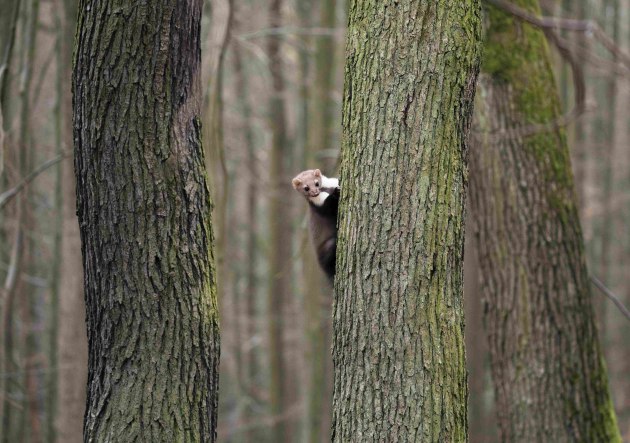
Learning about wildlife can be great fun for children, so why not discover even more with these resources?
 Home
Home  Membership
Membership  Customer Support
Customer Support  Create
Create  Blog
Blog 




















